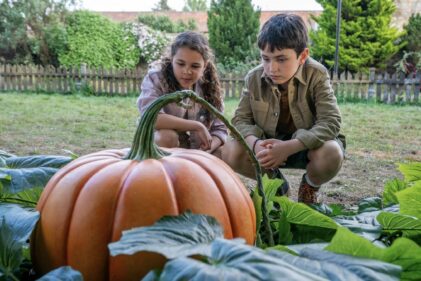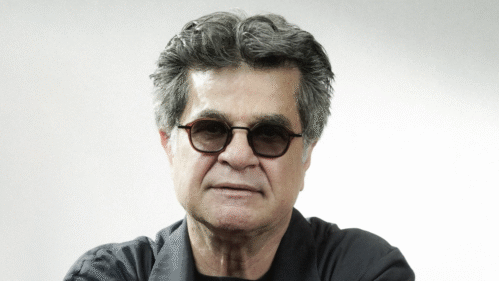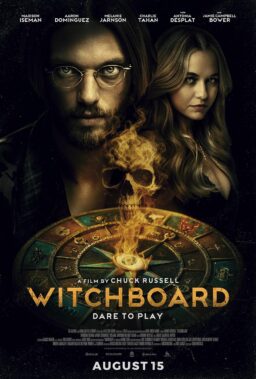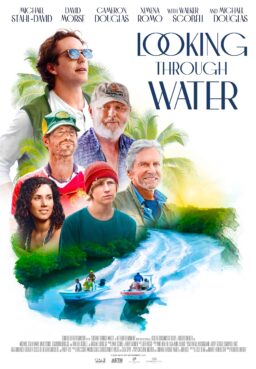Amazon Prime’s three new series for children and their families include a courageous girl whose best friend is an anxious egg, a boy who has to save the world, and a reboot of a beloved Saturday morning television show from the 1970’s. RogerEbert.com spoke to the people behind all three shows at San Diego Comic-Con.
“Sigmund and the Sea Monsters”
Sid and Marty Krofft produced pretty much all of live-action children’s television programming in the 1970’s, including the often silly but always colorful and tuneful “Land of the Lost,” “Sigmund and the Sea Monsters,” “Lidsville,” “The Bugaloos,” “H.R. Pufnstuf,” and “The Banana Splits,” as well as prime time variety shows like “Donny & Marie.” Now Marty Krofft, at age 80, is back with a reboot of “Sigmund and the Sea Monsters,” starring David Arquette.
“I loved the villains in all the Krofft shows, so to be able to be the same history books as the Witchiepoo is quite a thrill,” Arquette said. “I play Captain Barnabas, a salty sea captain who wants to prove that sea monsters are real. I chase the sea monsters around and the kids have to keep me away. It’s a real fun cat and mouse game.” In the backstory he created, his character “once read Moby Dick and it completely changed his life.”
Arquette is especially delighted that the sets and characters are real, not CGI. “Everything’s real in the Krofft world. The puppets are there with the puppeteers and the mechanics and voices, so you can ad lib in real time. The sets are real and the characters have great costumes. That makes it much more fun.” Krofft said, “Believe it or not, we have more people working than a lot of the sitcoms, a hundred people on location on the beach.” Parents and grandparents who remember the original will be glad to hear that some of the characters from the original are back, including Sigmund’s brothers, Blurp and Slurp, described by Krofft as a sort of Laurel and Hardy or Abbott and Costello duo, and some of the original actors will appear as well.
“Kids today are a little more sophisticated,” Krofft said, “because of all the electronics, all the technology. We never had money for that, so we always put it into the talent. They don’t sing the sets.” So what matters most to him is the actors and the music. “I can walk down the street and stop a guy in his 40’s and he can sing three of our theme songs. We get a million hits on YouTube for the clips from the old series.” Charles Fox (“Killing Me Softly” and many television and movie scores) is writing songs designed to stay in the heads of today’s children for the next four decades.
“With our shows, there’s no middle ground. They’re radical fans or they don’t know who we are,” Krofft said. He never stops selling, and it is easy to see he would like to bring back all of the old shows. “We only did 20 pilots in our whole career. We got 19 on the air and 18 were hits. If you want to keep doing this thing, you have to have thick skin.”
His secret? “We’re sticklers for likeability, whether it’s a villain or not. And the creativity is beyond anything that is out there. It’s a real family show. And we know the kids are smarter than adults.”

“Danger & Eggs”
“Saturday Night Live” star Aidy Bryant plays a girl named D.D. Danger in this animated series. “She’s a daredevil girl who’s out for adventure. We found the most energetic and childlike part of my voice and went for it,” Bryant said. Eric Knobel, also a writer on the series, plays Philip, her anxious best friend. He has a reason to be very cautious; he is an egg. “He’s more safety-conscious,” Knobel explained. “But he’s still on board with the ride.”
Writer/executive producer Shadi Petosky, who also voices the Pigeon Lady on the show, said that viewers cannot take the friendship at the heart of the series for granted. “It isn’t automatic or guaranteed. They have a lot of trials in the relationship. There are difficult moments. They don’t always want to be friends. It doesn’t always seem they should be friends. So keeping a friendship through difficult times is important. And we really wanted to show the variety of people they could be friends with. We want them to experience an actual city. We have a Pride episode. We want them to show what it is like to live in a diverse community and world.” Petosky, who is trans, said that representation was important throughout the show. The producers, writers, animators and performers are very diverse, including Jazz Jennings from “I am Jazz.” And they are careful to make it clear that “it is not a joke that this character is nervous. There are funny things about the way he says and does things, but it’s not a poking-fun-at-joke. We all kind of identify,” said co-creator Mike Owens, “They have each other’s back; they’re there for each other. ‘That’s who you are; that’s great.’” Petosky said that the techniques she has learned to deal with anxiety are incorporated into the show, but that it is also important to let kids know that their feelings are valid. Sometimes the solution is not to calm down but to solve the problem.
Cast members Charlyne Yi, Jasika Nicole, and Stephanie Beatriz also spoke about the importance of diversity in the show, which includes a same-sex marriage and a character who uses the pronoun “they.” “I want kids to take away from the show that it is okay to be different, that you can celebrate differences, and that being different does not make you wrong or bad,” said Beatriz. “And that message comes through in a lot of different ways in the show, a lot of ways that don’t necessarily get talked about with kids. There’s a lot about empowerment for girls and for kids. There is a reckoning that happens with kids as they see messages about who they are expected to be attracted to or what it means to be who they are. Our message is that they get to decide that for themselves.” And there’s an episode where everyone tries to save a girl, until she explains that she does not need to be saved, encouraging kids to explain what they want and respect those choices made by others.
Nicole, who plays two different roles, talked about developing distinctive voices for each. “Sheriff Luke is a little boy, so I wanted to do something small sounding. I played around with a lot of different sounds to get something a little raspier. And for Captain Banjo, who is named after my dog Banjo, I came up with something Southern, a harder R, a lot like my friends’ mothers when I was growing up in Texas. I love voice work. It’s like putting on a costume except in the dark.”

“Niko and the Sword of Light”
Four college friends sitting around a kitchen table had an idea for a comic book app telling a story about a boy who has to save the world. Amazon picked it up and it became their first series launch to win an Emmy for the pilot. Creators Adam Jeffcoat, Bobby Chiu, Sofia Iffla, and Jim Bryson met in animation school, and decided that instead of pitching ideas, they would create something themselves. “This is a story with no gatekeepers,” said Chiu. “We just wanted to tell a cool, fun story, exactly what we wanted to do, and see if the world liked it.
“We were able to put together the whole production: concept art, character design, storyboards,” said Jeffcoat. They wanted Niko to be of uncertain ethnicity so all children can see themselves in him. “He has an innocence that comes from being born from the light, and that is what gives him the power. He is super positive, always sees the good in people, and we want him to help kids believe in himself.” “As artists, what we can do with our gifts is influence the next generation in a positive way,” Iffla said. All four creators were inspired by “The Goonies” and the cartoons of the 1980’s, and they hope parents will watch with their children to enjoy the nostalgia of that tone. “With streaming on Amazon Prime we can make a linear show,” Chiu said. Instead of 13 self-contained episodes, each builds on the one before.
The voice talent for Niko includes SpongeBob’s Tom Kenny, Kari Wahlgren (“Kung Fu Panda”), and Dee Bradley Baker (“American Dad”). Baker plays Chomsky, “a nervous, avuncular, brilliant, off-kilter, scientist.” Wahlgren plays Lyra, Niko’s guide, and also Flicker a bee-looking character who is sort of “a giant Tinkerbell you ride around on,” said Kenny. “She is very adept at playing non-verbal characters.” “It’s not just about a funny voice,” said Wahlgren, “It really does come from the acting standpoint first. Sometimes you have the artwork to see how the character looks. Sometimes there’s a description. Sometimes there’s a script. You take the clues from whatever you are given and then you let your imagination go from there. Depending on how fleshed out it is in the creator’s mind, it becomes a collaborative effort to bring those characters to life.” Kenny said, “It’s looking at the tea leaves, all your elements, even what the creator has done in the past, figuring out the tone. You make your best guess and try to have as much control over what you can have control over, which is hardly anything, and hope you are the one who captures what they are looking for. It’s way more brainwork than people realize.” He said it was a challenge but also freeing to make the entire performance just the voice, without worrying about facial expressions and gestures or, since they normally act alone, what the other actor is doing. “It gets a little trippy when I’m acting with myself,” said Wahlgren, whose characters on the show include two who have to talk to each other. Baker described being a voice actor as “a theater in your mind.”












